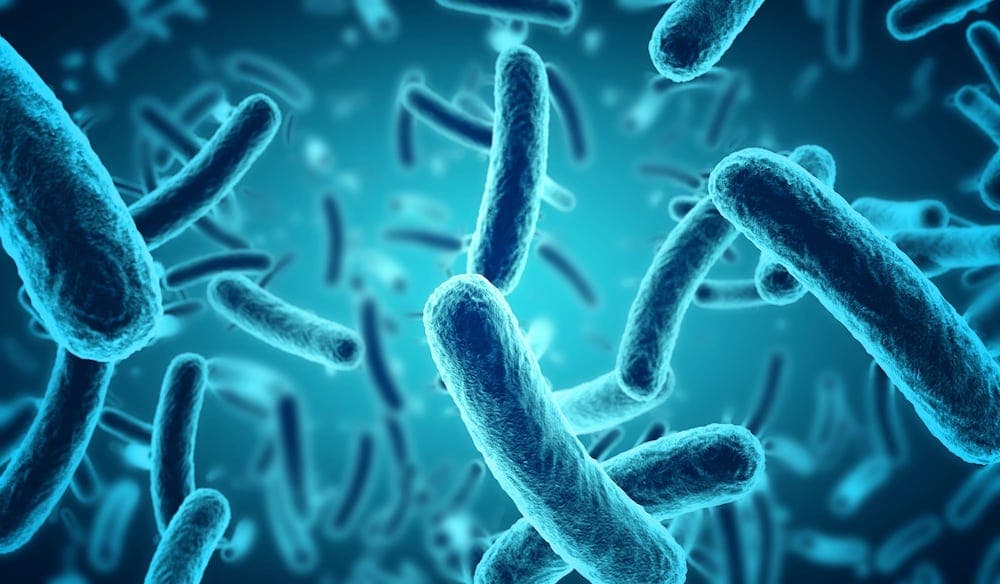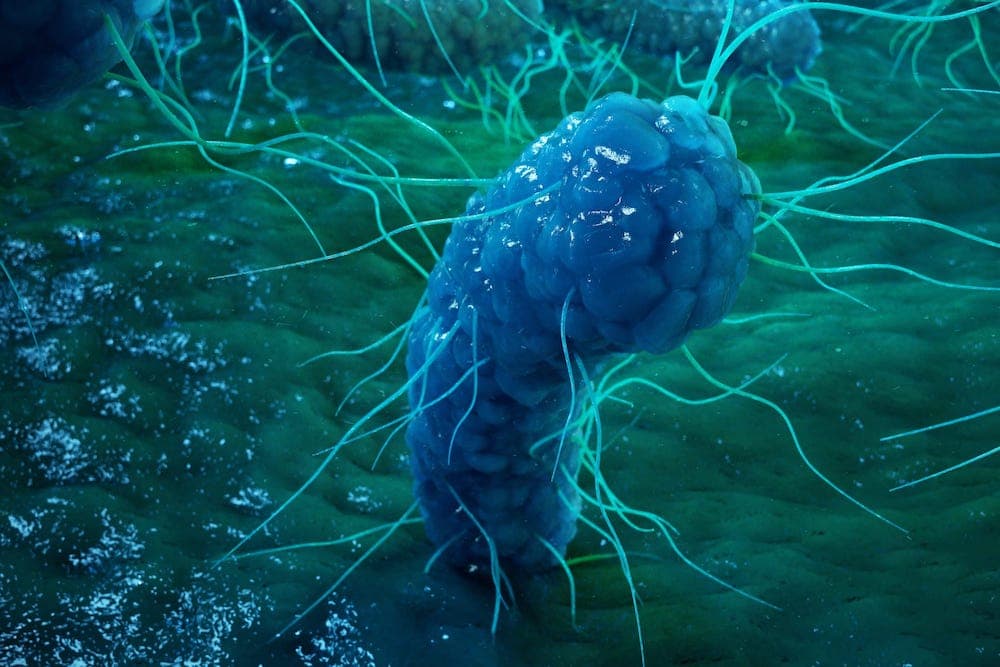Learn : Food & Nutrition
Allergies & Probiotics
Maybe your dog has been scratching more than usual and getting frequent hot spots. The culprit could be pollen drifting through the air or the dust around your home. But food allergies also cause itchy ears, paws, and bellies. A simple change in diet—along with some helpful bacteria—could help your pet feel better.
What Are Food Allergies?
We often hear about gluten intolerance, lactose intolerance, and meat allergies1. But what do these mean?
Yes, you should avoid food that your body responds badly to (and do the same for your beloved pet). But why we can’t eat certain things comes down to how our bodies respond.
Food intolerance means crucial enzymes that would break nutrients down are missing. For example, some dogs and humans might be missing the enzyme lactase that breaks down lactose sugars in milk2.
Food allergies3, on the other hand, are far less common and involve the immune system. Dogs are frequently allergic to components of beef, dairy, or chicken4. If the immune system is an army, it might see beef as an invader and attack. In reality, the beef might simply be an innocent bystander during a time of inflammation that gets caught up in a mistaken identity. But the damage is done—the body is on high alert in response to the allergen, possibly resulting in itchiness.
The Gut Microbiome & Allergies
Gut bacteria play a huge role in the lives of our pets. Their microbial friends ensure that they can process nutrients, maintain a healthy immune system and keep out potential pathogens5. When the gut microbiome becomes unbalanced (called dysbiosis), it can lead to various health problems, such as diarrhea or inflammatory bowel disease6.
Since food allergies stem from immune responses and faulty processing of nutrients—both actions helped along by bacteria—it makes sense that scientists are exploring the link between gut microbes and allergies7. It also doesn’t hurt that around 70 percent of the immune system is found in your gut8.
To date, most of these studies have been done in mice and humans. For example, mice treated with antibiotics tend to be more susceptible to food allergies and their symptoms9. Researchers have additionally noted changes in the microbiome in people with atopic dermatitis—itchy and red skin that is often a sign of allergies—compared to their healthy counterparts10. Intestinal dysbiosis was also linked to reports of some food and seasonal allergies in a study of nearly 2,000 U.S. adults11.
Moreover, the bacteria that colonize our guts when we are young may affect susceptibility to food allergies later in life12. One study found that the bacterial family Bacteroidaceae were underrepresented in three-month-old infants who later had food sensitivity13. More research is needed, but this could mean that of the gut microbiome has far-reaching effects on food allergies.
And the influence of the gut microbiome may extend to allergies in general as well14. How your pet reacts to dust and pollen could also be dictated by the balance of bacteria in their gut.
As scientists continue to investigate the relationship between allergies and the microbiome more studies in pets will be performed. They will hopefully shed light on how to make treatments better for our companions—and whether revitalizing a healthy microbiome should be part of that effort.
Allergies & Probiotics
So what can we do about the link between allergies and gut microbes? Adding a probiotic to your pet’s diet could help. Probiotics are strains of live bacteria that are formulated to help bring intestines back to a state of microbial balance. They are designed to help with digestion and prevent gastrointestinal problems such as diarrhea.
But if allergies and the gut microbiome are indeed linked, as research suggests, then supporting the growth of beneficial bacteria in your pet’s gut may help their food allergies.
Lactobacilli strains and Bifidobacterium are bacteria commonly used in probiotics—mainly because they have key roles in digestion and keeping the gut environment ideal for growth15. In support of using these bacteria for allergy treatment, scientists found that treatment with a probiotic containing Lactobacillus in beagles led to a decrease in clinical signs of atopic dermatitis16,17. It’s possible that the composition of the gut microbiome helps control immune responses to allergens in the intestines, thereby affecting the body’s reaction. Additionally, studies in humans indicate that probiotics may be useful to treat allergy symptoms such as chronic rhinitis18 and atopic dermatitis19, and evidence shows that probiotic treatment may be helpful at preventing these symptoms if they are given while the immune system is developing19.
Continued research is sure to determine if bacteria truly have a benefit for allergies and narrow down which strains are the most helpful. Perhaps our pets will lead a less itchy life thanks to their microbial friends.
References
1. Clopton, J. As Tick Bites Rise, So Do Meat Allergies. WebMD (2018). Available at: https://www.webmd.com/skin-problems-and-treatments/news/20180806/as-tick-bites-rise-so-do-meat-allergies. (Accessed: 21st December 2018)
2. Food Allergies in Dogs. Modern Dog magazine Available https://moderndogmagazine.com/articles/food-allergies-101/15131. (Accessed: 21st December 2018)
3. Verlinden, A., Hesta, M., Millet, S. & Janssens, G. P. J. Food allergy in dogs and cats: a review. Crit. Rev. Food Sci. Nutr. 46, 259–273 (2006).
4. Mueller, R. S., Olivry, T. & Prélaud, P. Critically appraised topic on adverse food reactions of companion animals (2): common food allergen sources in dogs and cats. BMC Vet. Res. 12, 9 (2016).
5. Craig, J. M. Atopic dermatitis and the intestinal microbiota in humans and dogs. Vet Med Sci 2, 95–105 (2016).
6. Carding, S., Verbeke, K., Vipond, D. T., Corfe, B. M. & Owen, L. J. Dysbiosis of the gut microbiota in disease. Microb. Ecol. Health Dis. 26, 26191 (2015).
7. Ho, H.-E. & Bunyavanich, S. Role of the Microbiome in Food Allergy. Curr. Allergy Asthma Rep. 18, 27 (2018).
8. Vighi, G., Marcucci, F., Sensi, L., Di Cara, G. & Frati, F. Allergy and the gastrointestinal system. Clin. Exp. Immunol. 153 Suppl 1, 3–6 (2008).
9. Bashir, M. E. H., Louie, S., Shi, H. N. & Nagler-Anderson, C. Toll-like receptor 4 signaling by intestinal microbes influences susceptibility to food allergy. J. Immunol. 172, 6978–6987 (2004).
10. Watanabe, S. et al. Differences in fecal microflora between patients with atopic dermatitis and healthy control subjects. J. Allergy Clin. Immunol. 111, 587–591 (2003).
11. Hua, X., Goedert, J. J., Pu, A., Yu, G. & Shi, J. Allergy associations with the adult fecal microbiota: Analysis of the American Gut Project. EBioMedicine 3, 172–179 (2016).
12. Blázquez, A. B. & Berin, M. C. Microbiome and food allergy. Transl. Res. 179, 199–203 (2017).
13. Azad, M. B. et al. Infant gut microbiota and food sensitization: associations in the first year of life. Clin. Exp. Allergy 45, 632–643 (2015).
14. Lynch, S. V. Gut Microbiota and Allergic Disease. New Insights. Ann. Am. Thorac. Soc. 13 Suppl 1, S51–4 (2016).
15. Walker, W. A. Mechanisms of action of probiotics. Clin. Infect. Dis. 46 Suppl 2, S87–91; discussion S144–51 (2008).
16. Marsella, R. Evaluation of Lactobacillus strain GG for the prevention of atopic dermatitis in dogs. Am. J. Vet. Res. 70, 735–740 (2009).
17. Marsella, R., Santoro, D. & Ahrens, K. Early exposure to probiotics in a canine model of atopic dermatitis has long-term clinical and immunological effects. Vet. Immunol. Immunopathol. 146, 185–189 (2012).
18. Yang, G., Liu, Z.-Q. & Yang, P.-C. Treatment of allergic rhinitis with probiotics: an alternative approach. N. Am. J. Med. Sci. 5, 465–468 (2013).
19. Prescott, S. L. & Björkstén, B. Probiotics for the prevention or treatment of allergic diseases. J. Allergy Clin. Immunol. 120, 255–262 (2007).
Continued research is sure to determine if bacteria truly have a benefit for allergies and narrow down which strains are the most helpful. Perhaps our pets will lead a less itchy life thanks to their microbial friends.



 Probiotics For Dogs
Probiotics For Dogs
 Microbiome And Pet Health
Microbiome And Pet Health
 Microbes in the Gut
Microbes in the Gut
 Understanding a Dog’s Sense of Smell
Understanding a Dog’s Sense of Smell
 Probiotics and Pet Health
Probiotics and Pet Health